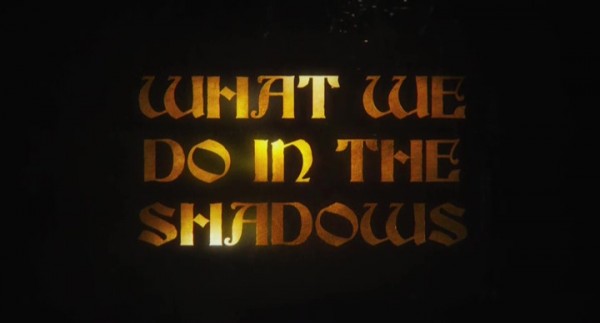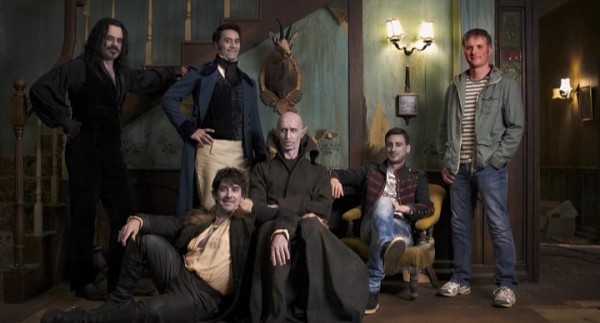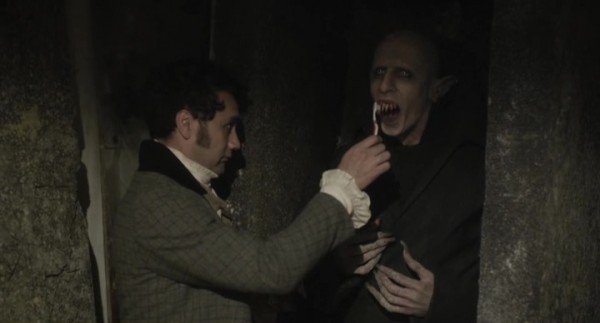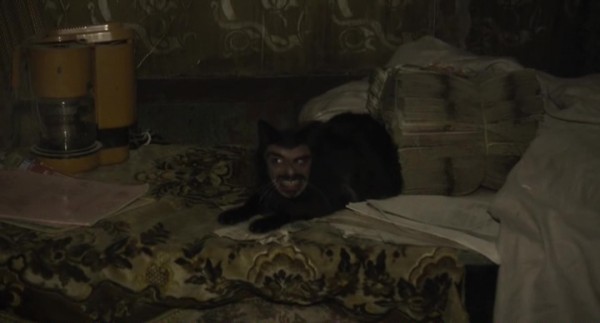
“Vampires have had a really bad rap. We’re not these mopey old creatures who live in castles, eh well, some – most of us are. A lot are. But there are also those of us who like to flat together in really small countries like New Zealand.”
That quote by Viago (Taika Waititi), the most prominent of our three vampire protagonists, is the closest thing to a plot summary one can conjure up for What We Do in the Shadows, though another quote by Jemaine Clements’s Vladislov, “When you get four vampires in a flat, obviously there’s going to be a lot of tension”, also does the job nicely.

The fact that this movie made any money at all shocks me as I know its sitcom premise turned off a lot of viewers and there were very few big name actors attached (the only actors with name appeal in the US are Flight of the Conchords‘ Jemaine Clement and Rhys Darby and their names certainly haven’t sold a lot of the other movies they’ve been in.) So outside of its home country of New Zealand, What We Do in the Shadows should basically only appeal to Clement/Darby fans; people who actually watched and liked stuff like Eagle vs. Shark, Gentlemen Broncos, Pirate Radio, and Yes Man; and fans of intentionally doofy horror comedies. I am all of these things.
Due to the nature of its subject matter, What We Do in the Shadows is a bit of a mockumentary/found footage hybrid. It doesn’t end with the camera crew dying but we’re dealing with monsters and though it has no lack of twee moments and goofiness, it treats its subjects as real and very dangerous. This may be a comedy but it takes place in a horror movie universe.
The opening title card mentions a yearly gala event called the “Unholy Masquerade”, telling the audience that the subjects we are about to be following are part of the secret society that hosts the event and that the camera crew wore crucifixes and were granted protection by the subjects. We open as Viago (18th century dandy, fussy but with a rather sunny disposition) wakes up from his coffin and goes to wake up his flatmates.
This scene highlights the differences between each of the characters: Deacon (Jonny Brugh, former member of Hitler’s Nazi Vampire Army and the “young rebellious one” of the group at at 183 years old) sleeps hanging upside down in a closet, Vladislav (old, medieval, fond of torture, kind of a pervert, a bit racist) is seen in a tryst with three blondes atop red satin sheets lying vertically on the wall, Petyr (Ben Fransham, bestial, looks a great deal like Marnau’s Count Orlock) is over 8000 years old and sleeps standing up in a stone tomb in the skeleton-littered cellar of the flat.
After Petyr responds to Viago’s hint that he should sweep up some of the dismembered body parts in his room with a monstrous growl, the three more human-acting vampires meet in the kitchen for a flat meeting. Viago and Vladislav gang up on Deacon, who has not done the dishes in 5 years even though it’s obviously his turn on the chore wheel. After some arguing (wherein Viago complains about his flatmates getting blood on his antique sofa and Vladislav suggests that they get some slaves) we see Deacon complaining as he is forced to do a heap of bloody dishes and the opening credits play.

That’s pretty much the trajectory for the plot. The story and the jokes fall under two subjects: How completely oblivious and out-of-touch the vampires are with the modern world around them and the frankly absurd ways an otherworldly undead monster deals with the more day-to-day aspects of that existence.
A great deal of the run-time is simply about the ennui associated with being an undying creature forced to live with regularly needing to drink the blood of human beings. Viago, Deacon, and Vladislav try to live a normal life while trolling for victims to hypnotize or lure back to their home to kill. The Unholy Masquerade, the event for which the movie is supposedly taking place, is just one little scene. The bulk of the story has to do with Nick (Cori Gonzalex-Macuera), a victim of Petyr who is turned into a vampire toward the end of the first act, and Stu (Stu Rutherford), Nick’s human friend who teaches the vampires about modern technology and remains fairly unbothered by all the crazy things going on around him. There’s also a smaller c-plot involving occasional confrontations with a group of werewolves led by Rhys Darby’s alpha-male.
Most of the film’s dialogue was improvised, with only a loose outline of plot to go by. This aids the film in making the characters’ conversation feel natural and it’s that sense of mundanity juxtaposed with the creepy and supernatural aspects of the plot that cause the most laughs. The jokes come at a rapid pace and are so thoroughly peppered throughout that, if one doesn’t land you’ve already moved onto the next by the time it registers that you didn’t find it funny. The three leads have an easygoing chemistry with one another and the sense of familiarity makes them instantly likeable and relatable despite the over-the-top, selfish, and fairly prickish nature of each one.

Some real pathos is even mined from Viago, who came to New Zealand to profess his love to a woman only to be delayed by his servant putting the wrong postage on the box he was contained in, causing him to arrive after she has married. The scene where he shows the only memento he has of her, a silver locket which he can’t wear, is legitimately emotional.
While the movie never tries to be scary, there is a certain sense of eeriness that tints the atmosphere and gives it a fairly unique feel, aided by some good (for the budget) special effects, a great soundtrack, and some killer set design and lighting. A scene of the a cameraman following a victim around the flat trying to escape is fairly tense even though it’s filled with gags and jokes and a confrontation with the werewolves in their bestial forms is rather upsetting. The use of the leads’ vampire powers (such as flight and the ability to turn into animals) is usually funny and unsettling at the same time. The documentary/found footage angle serves both the creep factor and the comedy, though it’s largely ignored to the point of being a plot-hole except in the case of jokes which draw attention to how nonsensical it is that there are cameramen hanging around.
I fear I’m overselling it but I found What We Do in the Shadows to be a delight and it has jumped up rather high on my list of favorite horror comedies (though it is certainly more the latter than the former.) Flight of the Conchords fans will find a lot to love here, obviously, but horror fans and vampire lovers are likely to find a new movie to adore.
Rating: 




Out of a Possible 5 Stars